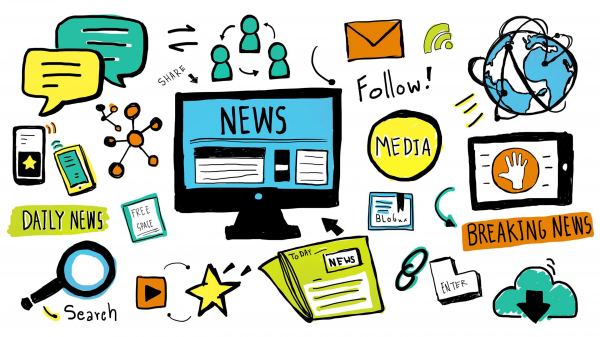By Sajeeb Sarker
Media Literacy
Media School July 21, 2020

Media Literacy is considered as the `education for 21st century`. Image source: Pinterest
In easy words, Media Literacy is the ability to access, analyze, evaluate and create or manipulate media in a variety of forms (e.g. print, electronic, new media). National Association for Media Literacy Education (USA) defines media literacy as the ability to access, analyze, evaluate, create, and act using all forms of communication.
In today's world, people are showered in volumes of information coming from different types of media. With the advancement of digital technologies, Internet-based media platforms (such as online news portals and social media) have flourished more than ever. This is an opportunity for free flow of information on one side, and the threat of unfiltered fake and dangerous information is also there on the other side.
In such a context, the consumers of the media platforms must have the abilities or efficiencies to access appropriate media when necessary, and filter out the fake or unsafe information. Also, media users must have enough knowledge to identify valuable information and apply them to achieve their best interest. When necessary, people must be able to create media or media contents to maximize their benefits in different terms.
When a person becomes 'media literate', it means that the person is able to understand the role of media in a society, and s/he possesses essential skills of inquiry and self-expression necessary for citizens of a democracy.
But it is important to understand that becoming media literate is not to simply knowing or memorizing facts or statistics about the media; it is, rather, learning to analyze and evaluate media contents. Len Masterman referred it as 'critical autonomy' or the ability to 'think for oneself'.
As we can understand, media literacy education is aimed at promoting awareness at the users end. It advances capabilities for both consuming and creating media. Media literacy education also provides a way to identify and resolve the negative effects of media including including issues like media manipulation, misinformation or fake information, gender stereotypes, racial stereotypes, sexualization of children, loss of privacy, cyberbullying etc.
Acknowledging its significance, media literacy is being considered as the 'education for 21st century'. Keeping that in mind, media literacy education has been introduced as an integral part of the curriculum in the United States and some European Union countries while encouraging an interdisciplinary global community of media literacy scholars and educators, and paving the way to publish scholarly and professional journals and national membership associations in this regard.
References
Potter, W. James (2010-11-30). The State of Media Literacy. Journal of Broadcasting & Electronic Media. doi:10.1080/08838151.2011.521462. ISSN 0883-8151.
'Media Literacy Defined' (2010-04-06). National Association for Media Literacy Education.
Renee, Hobbs (2011). Digital and media literacy: connecting culture and classroom. Thousand Oaks, Calif.: Corwin Press. ISBN 9781412981583.
Supsakova, Bozena (2016). Media Education of Children a Youth as a Path to Media Literacy. ProQuest. 7 (1). ProQuest 1785832718.
Masterman, Len (1985). Teaching the Media. Issue 26 of Comedia series. Comedia (Routledge). ISBN: 0415039746, 9780415039741.


